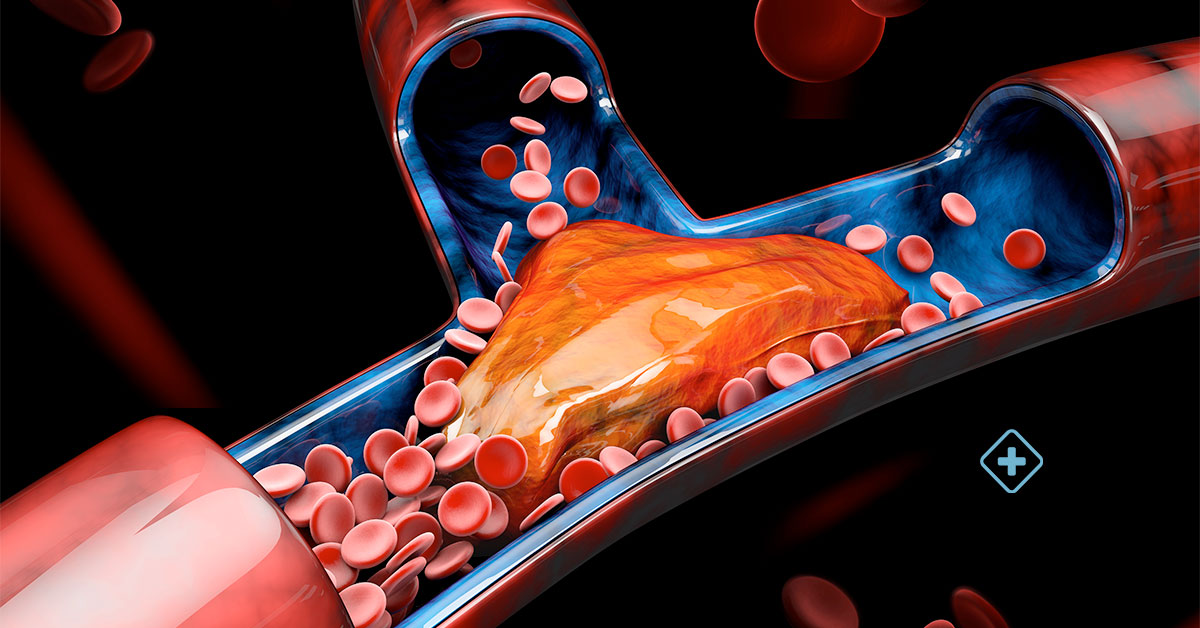
Tromboembolism
Thromboembolism is a venous disease. Read about symptoms, causes and prevention. Schedule Your Appointment Today.

Thromboembolism is a venous disease that generates a blood clot when a blood vessel breaks and prevents blood from flowing to the outside, stopping bleeding through a thrombus (an undissolved blood clot that remains in the blood vessel where it has been formed). These changes could be Deep Vein Thrombosis (DVT), or a pulmonary embolism could also develop in the event of blood flow in the lungs being obstructed by a detachment of small fragments of these thrombi.
The affected extremities usually increase in size and even the skin could become ulcerated, swelling, and bluish discoloration.
Causes
There are different identified risk factors for thromboembolism; among them are:
-
Age
-
Extended periods without movement
-
Obesity
-
Trauma
-
Use oral contraceptives
Symptoms
In the case of presenting DVT (Deep Vein Thrombosis) located in the thighs, the pain would appear as a symptom, although swelling of the area and redness will be the most common feature. If we talk about pulmonary embolism, it is characterized by chest pain, cough accompanied by blood, and the feeling of shortness of breath.
Thromboembolism, or deep vein thrombosis, can occur without causing visible symptoms.
Risk factors
-
Being in a state of rest for extended periods. If the legs are resting for a long time, the calf muscles do not contract to activate blood circulation. This can increase the risk of blood clots.
-
Injury or surgery can increase the risk of clots
-
Pregnancy. During pregnancy, the pressure in the veins of the pelvis and legs increases and can cause clots.
-
Hormonal contraceptives or hormone replacement therapy. Both can cause increased clotting ability.
-
Being overweight. Being overweight and obese increases the pressure in the veins of the pelvis and legs.
-
Smoking. Smoking affects blood clotting and circulation and may increase the risk of DVT (Deep Vein Thrombosis).
-
Cancer. Some cancers cause an increase in blood clotting substances.
-
Having intestinal diseases such as Crohn's disease or ulcerative colitis
-
Age. Being over 60 can increases the risk
-
Remain seated for long periods
Diagnosis
In order for the specialist, either Angiologist or Vascular Surgeon, to diagnose DVT (Deep Vein Thrombosis), he will ask about the symptoms that have appeared and will carry out a physical examination to ensure if there are areas of swelling, tenderness, or color changes in the skin. The doctor may recommend performing any of the following tests:
-
Echography. A rod-shaped device called a transducer is placed on the part of the body where there is a clot. The transducer sends out sound waves, and as they pass through tissue and bounce back, a computer transforms the waves into a moving image on a screen.
-
Blood tests. Most patients with DVT have large amounts of a substance called D-dimer in their blood.
-
Phlebography. An ink injection is applied to a foot or ankle vein, and an X-ray procedure creates an image of the veins in the legs and feet to locate clots.
-
Tomography or MRI. With both studies, the veins can be visualized and shown if there are clots.
Treatment
Available treatments for DVT (Deep Vein Thrombosis) focus on preventing the clot from increasing in size. Therefore, preventing the clot from breaking free and causing a pulmonary embolism. Subsequently, the other goal is to reduce the chances of getting DVT again. The specialties that treat this condition are Angiology and Vascular Surgery.
The treatments available to combat DVT are:
-
Anticoagulants
-
Clot busters
-
Filters
-
Compression socks
Living with Tromboembolism
If you are diagnosed with DVT (Deep Vein Thrombosis) and are receiving treatment, it is crucial to control the diet and watch for any signs of excessive bleeding and take precautions to prevent another episode of DVT. Among the measures that can be taken are:
-
See the doctor regularly
-
Take anticoagulants according to the doctor's instructions
-
Pay attention to any signs of excessive bleeding
-
Stay in movement
-
Wear compression stockings
¿When to see a doctor?
If presenting any of the symptoms described, it is necessary to go to a Vascular Surgeon or Angiologist. This will take care of making a diagnosis in order to establish an adequate treatment for your health.
When consulting an Angiologist, or Vascular Surgeon, it is advisable to keep a record of the discomfort with a detailed description of the symptoms and how long they have occurred. If symptoms of pulmonary embolism, which arise as a result of a complication of venous thrombosis, occur and are life-threatening, it is crucial to seek medical attention immediately.
Health Library
Angiology

Thoracic Aortic Aneurysm
The aortic aneurysm is defined by the localized dilation of the aorta. The major risk of the aneurysm is a rupture which results in the death of the patient. Diagnosed early enough, treatment often involves managing high blood pressure.
- Do You Need an Appointment with a Specialist?
- call us
- write us
- let's talk


